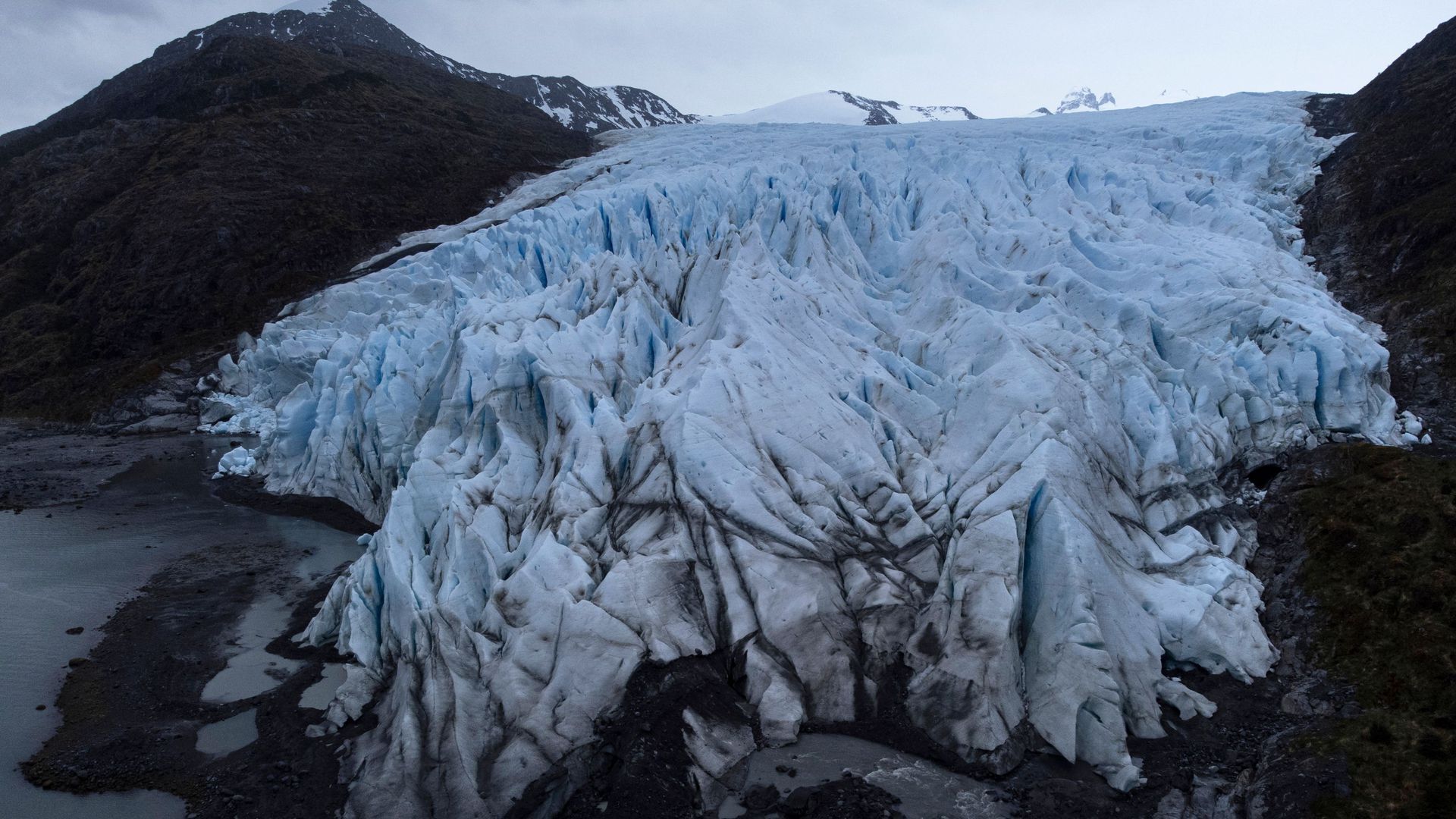| | | | | | | | | | | Axios Science | | By Alison Snyder ·Feb 10, 2022 | | Thanks for reading Axios Science. This week's newsletter is 1,452 words, about a 5.5-minute read. | | | | | | 1 big thing: The "never COVID" cohort |  | | | Illustration: Brendan Lynch/Axios | | | | Some people don't get COVID despite being exposed to the virus — a mystery researchers are trying to unravel, Axios' Eileen Drage O'Reilly writes. Why it matters: Understanding the small cohort of "COVID" people could lead to new vaccine targets or other protections as the world enters the third year of the pandemic. - Various possibilities for how these people are protected are being tested: immune defenses stemming from other infections, human genetics, viral load or environmental factors. And then there's simple luck.
Driving the news: Using a highly debated method called a human challenge study, a British trial deliberately exposed people who were unvaccinated and had no evidence of prior infection by placing a droplet of SARS-CoV-2 in their nose. They found 16 out of 34 participants did not get infected, according to the pre-print paper posted recently. - The study is small and has not yet been peer-reviewed, but it appears to support anecdotal evidence that sometimes people in close contact with contagious people are not getting sick or not testing positive for the virus.
- The number of people with apparent resistance raises a key question: "Why is it that some people are more vulnerable than others?" says study co-author Peter Openshaw, professor of experimental medicine at Imperial College London.
The latest: Researchers are now trying to zero in on that question. 1) Cross-immunity from the four endemic human coronaviruses is one hypothesis. Those other coronaviruses cause many of the colds people catch and could prime B-cell and T-cell response to this new coronavirus in some people. - There's no compelling evidence one way or the other yet, John Brooks, chief medical officer for the CDC's COVID-19 Response Team, tells Axios. But, infectious diseases often prompt some longer-term immune memory that can provide some assistance, he adds.
2) Multiple genetic variations may make someone's immune system more or less susceptible to the virus. - A genetic predisposition to not getting infected "is seen in other diseases where people have one or multiple factors that interfere with the virus binding to cells or being transported within," says Gigi Gronvall, an immunologist and senior scholar at the Johns Hopkins Center for Health Security.
3) Mucosal immunity may play an underrecognized role in mounting a defense. - If someone's mucosal system is healthy and able to respond to a range of invading pathogens, "it will often counter the infection before the immune system involving antibody and T-cells and all of those other things has time to step in," Openshaw says.
- This is also a reason nasal vaccines and boosters are being explored as a possible part of the vaccination regimen.
4) Where the virus settled on the human body, how large the particle was, the amount and length of exposure, how good the ventilation was and other environmental circumstances may also play a role, Openshaw says. The bottom line: Vaccination and boosters, wearing masks, washing hands and good ventilation remain our most important tools in preventing infection or mitigating symptoms, Brooks says. - Research into the "never COVID" cohort is important for potential medical countermeasures, but "I hope that people don't think they're superhuman" and protected against SARS-CoV-2 just because they haven't gotten it yet, Gronvall says.
|     | | | | | | 2. Catch up quick on COVID |  Data: N.Y. Times; Cartogram: Kavya Beheraj/Axios "New COVID cases are plunging all across America, and Omicron's death toll is also slowing down," per Axios' Sam Baker and Kavya Beheraj. An FDA advisory committee will meet next week to discuss emergency use authorization of Pfizer's COVID-19 vaccine in children under 5 years old amid ongoing questions around the vaccine's dosing and effectiveness, Axios' Caitlin Owens writes. "[T]he first large study to assess cardiovascular outcomes 1 year after SARS-CoV-2 infection has demonstrated that the virus' impact is often lasting," Meredith Wadman reports for Science. |     | | | | | | 3. World's mountain glaciers may hold 20% less ice than thought |  | | | A view of the Fouque glacier, located in southern Chile's Magallanes region in November 2021. Photo: Nicolas Garcia/AFP via Getty Images | | | | The world's glaciers may contain less ice volume than previously thought, according to a study published in Nature Geoscience, meaning their potential contribution to water supplies would be lower than older estimates, Axios' Jacob Knutson writes. Why it matters: Glaciers around the world are rapidly melting because of global warming from human-caused greenhouse gas emissions. Their melting frees up water that raises global sea levels, and provides water supplies to people at lower elevations. - The study suggests global sea level rise could also be less than estimated, but glacial melt is just one factor that contributes to rising oceans. The vast majority of sea level rise comes from the world's polar ice sheets in Greenland and Antarctica, as well as the thermal expansion as ocean waters warm.
By the numbers: The researchers generated an estimate of total global ice volume by mapping 98% of the worldwide glacier-covered area using hundreds of thousands of satellite images collected between 2017 and 2018. - They determined that the world's glaciers can potentially contribute roughly 257mm (10 inches) to sea-level rise, or around 20% less than previously estimated.
They also found regional distinctions in ice volume compared to previous assessments. For example, they estimate the Himalayas at that time held 37% more ice than past surveys found, while the Andes in South America contained 27% less. - Those new corrections in ice volume can clarify how much freshwater is available to people living near those glaciers and can inform governmental decisions on infrastructure and agricultural reforms.
The big picture: Though their estimate suggests glacial melt may contribute less water to sea-level rise than previously expected, the researchers said their study cannot make projections on the total rise because thermal expansion and shrinking ice sheets are the biggest factors. - The U.N. Intergovernmental Panel on Climate Change warned last year that glaciers capping three of Africa's iconic mountains — Mount Kenya in Kenya, the Rwenzori Mountains in Uganda and Mount Kilimanjaro in Tanzania — will likely disappear over the next two decades.
- Illustrating the high stakes involved with melting ice sheets, scientists are currently studying a massive glacier in West Antarctica — nicknamed "The Doomsday Glacier" — that could drastically raise sea levels by melting over the next several decades to centuries, Axios' Andrew Freedman reports.
|     | | | | | | A message from Axios | | Sports news worthy of your time | | |  | | | | Get the latest sports headlines, stats, stories and trends delivered daily to your inbox with Axios Sports. Subscribe for free | | | | | | 4. Worthy of your time | | Biden science adviser Eric Lander resigns after violating workplace policy (Shawna Chen — Axios) Researchers use ultrasound to turn neurons on and off in mice (Jonathan Wosen — STAT) A Beijing think tank's frank report of China's technological weaknesses has disappeared (Dennis Normile — Science) Ideology as biology (Mark Borello and David Sepkoski — NY Review of Books) |     | | | | | | 5. Something wondrous |  | | | Biohybrid fish. Credit: Michael Rosnach, Keel Yong Lee, Sung-Jin Park, Kevin Kit Parker | | | | Human heart cells make a new robotic "fish" swim, scientists report today. Why it matters: The engineering feat is a step toward creating artificial muscle that could one day be used in medicine and in soft robots. In the nearer term, the researchers say the robotic fish offers a platform for studying how heart muscle works in humans. How it works: A team led by Kit Parker, a professor of bioengineering and applied physics at Harvard University, put sheets of human heart muscle cells on each side of the tail of a fish skeleton made from paper and plastic, and covered in gelatin. (The design builds on their earlier work creating a robotic stingray.) - A cluster of cells sends signals that synchronize the stretching and contracting of the muscle cells, the researchers report in a study published today in Science.
- When cells on one side of the fish contract, the cells on the other side stretch, and so on, creating a self-sustaining swimming motion.
- It's a "tour de force in engineering," says Barry Trimmer, a professor of biology at Tufts University, who studies how to engineer artificial muscle using insect cells and wasn't involved in the new research.
A challenge for making a bigger muscle is how to keep the cells alive. In mammals, vasculature and blood vessels support the cells, but a similar design hasn't been developed to give cells access to a blood supply in artificial muscle. - The fish, fed by nutrients in the swimming medium, maintained their swimming speed and coordination for at least 108 days. "That far exceeds what others have managed to do," Trimmer says.
- It could be that the interaction of the muscles helps to maintain them.
The big picture: Artificial muscle could enable soft robots that can interact with people or be deployed to survey delicate environments (and then biodegrade when they are done). - One challenge though is developing soft actuators, or motors. Today's machines are driven by electric motors, gasoline engines and other technologies. Some researchers are trying to make synthetic actuators from new materials that move when heated or cooled.
- But, "we already have what we need — it's called a muscle — we just don't know how to put it into a robot," Trimmer says.
- The second problem is power. Instead of lithium batteries or gasoline, some researchers are aiming to create a sustainable machine powered by sugars or fat.
|     | | | | | | A message from Axios | | Sports news worthy of your time | | |  | | | | Get the latest sports headlines, stats, stories and trends delivered daily to your inbox with Axios Sports. Subscribe for free | | | | Thanks to Eileen for contributing to this week's newsletter, and to Amy Stern for copy editing this edition. |  | Bring the strength of Smart Brevity® to your team — more effective communications, powered by Axios HQ. | | | | | | Axios thanks our partners for supporting our newsletters. If you're interested in advertising, learn more here.
Sponsorship has no influence on editorial content. Axios, 3100 Clarendon Blvd, Suite 1300, Arlington VA 22201 | | | You received this email because you signed up for newsletters from Axios.
Change your preferences or unsubscribe here. | | | Was this email forwarded to you?
Sign up now to get Axios in your inbox. | | | | Follow Axios on social media:    | | | | | |








No comments:
Post a Comment